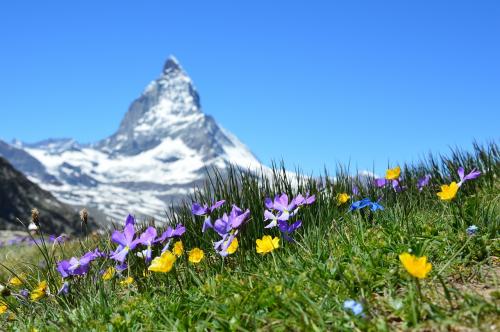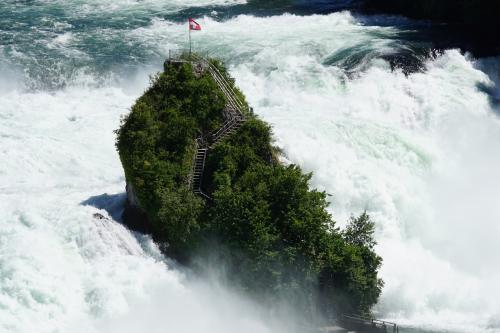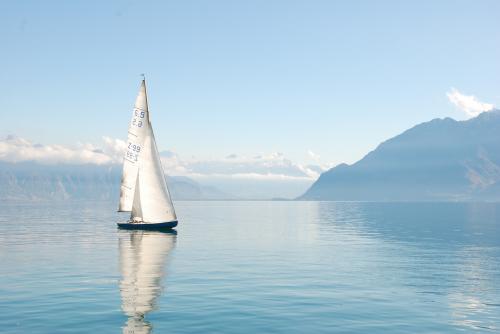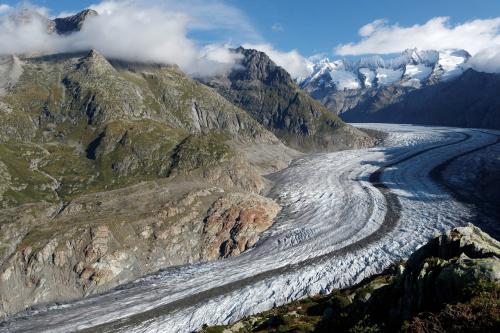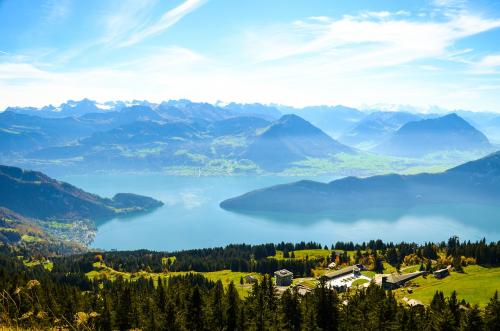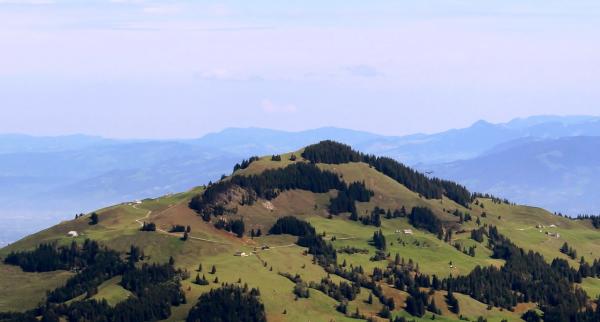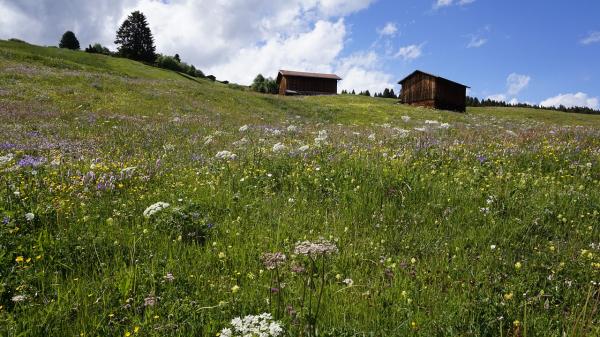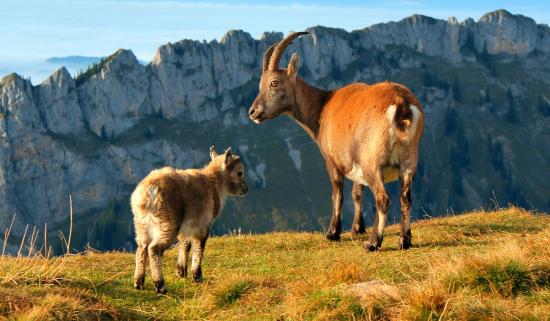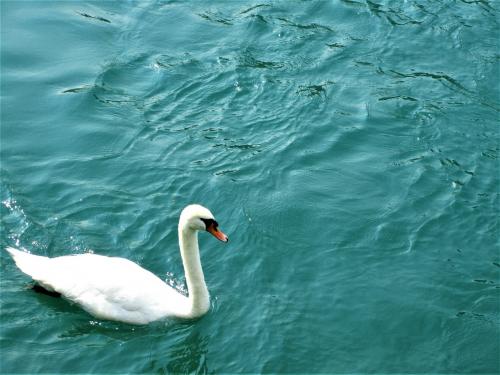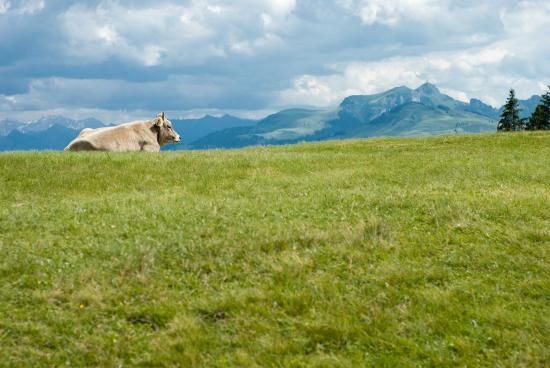Nature in Switzerland
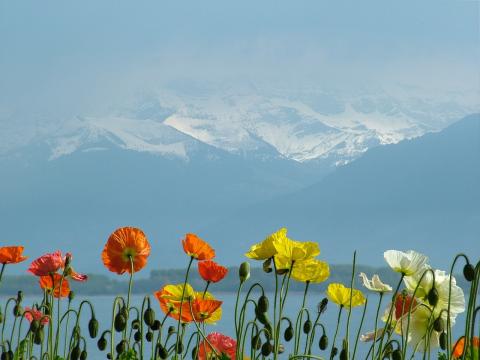
Switzerland is the small cozy and exceptionally beautiful county is mountainous central part of the Europe. It is situated between Germany, France, Italy and Austria and has no coasts. Territory of the country is predominantly mountainous. There are several major ranges of Alps in southern and northern parts of the country with long valley between them. There are plenty of glaciers and snow caps.
Switzerland lies in the zone of continental climate, but actual weather conditions of given location depend on its altitude. Such variety of relief and weather conditions causes wide variety of nature. Along with mosses and lichens typical for tundra there are mimosas and palm-trees just like on coasts of the Mediterranean Sea.
Places in Switzerland
Scenery of Switzerland is iconic depiction of European Alps. Lush forests, deep blue lakes and peaky mountains looming on the horizon are everywhere in the country. Every corner of Switzerland is great, but some of them are completely special.
Matterhorn
Matterhorn is the symbol of Alps. Sharp triangle mountain looks fantastic. But charm of Matterhorn is grim for around 500 unsuccessful climbers lost their lives on unwelcoming rocky slopes. Southern slope of the mountain belongs to Italy and the rest is in Switzerland.
Rhine Falls
Powerful Rhine Falls is the Europe’s largest waterfall. The waterfall is 23 m (75’) tall and especially astonishing during thawing. On the hill above the Rhine Falls there is Medieval Castle with a restaurant, a hotel and numerous shops.
Lake Geneva
The second largest body of fresh water in Europe is situated on border with France. The city of same name stands on its western bank. The lake is large. It is 73 km (45 mi.) long and 14 km (8 mi.) wide. Neighborhood of the lake is unique land with clean mountainous air, mild climate and range of other attractions.
Aletsch Glacier
Aletsch Glacier has lengths of 24 km (15 mi.) and it is the largest glacier in Alps. It is located in Bernese Alps in Western Switzerland. While drifting down to the valley it created long plain canyon similar to a broad road. In 2001 it was added to UNESCo World Heritage List.
Lake Lucerne
The Lake Lucerne is situated in Central part of the country. It comprises four parts connected by narrow straits. Basin of the lake was formed by ancient glaciers drifting along slopes of the mountains. Water in the lake is completely clear and it warms up to 20 °C (68 °F) during summer.
Flora of Switzerland
Forests are covering around 28% of territory of Switzerland and more than 70% of countries territory is mountainous. Considering given every relatively flat piece of Switzerland is covered forest. They consist of oak and beech trees predominantly and chestnut trees on southern slopes of the Swiss Alps. Higher in mountains coniferous trees (pine, spruce) are dominating.
Highlands are covered with carpets of field grass and flowers. Along with widespread species of crocuses, daffodils and chamomiles there are rare edelweiss, rhododendron, rockfoils and gentiana plants.
Fauna of Switzerland
Common inhabitants of plains of Switzerland are hares, pheasants, partridges and foxes. Also there are marmots, wolves and bears, but their populations are smaller. High mountains are populated by roe deer, chamois and Alpine ibex.
In mountains there are several species of predatory birds. Majority of bodies of water are populated by ducks, swans and typical European fresh water fishes. Hunting and fishing are under strict control. Hunting ducks and swans is prohibited completely and fishing requires license. And even with license all catch should be released.
Swiss National Park was established in 1909 and it is the oldest national park in Europe. There are protected populations of deer, marmots, martens, roe deer and wood grouses. Variety of plants includes relict pines and other unique mountainous species.
 Seasons of the Year
Seasons of the Year 